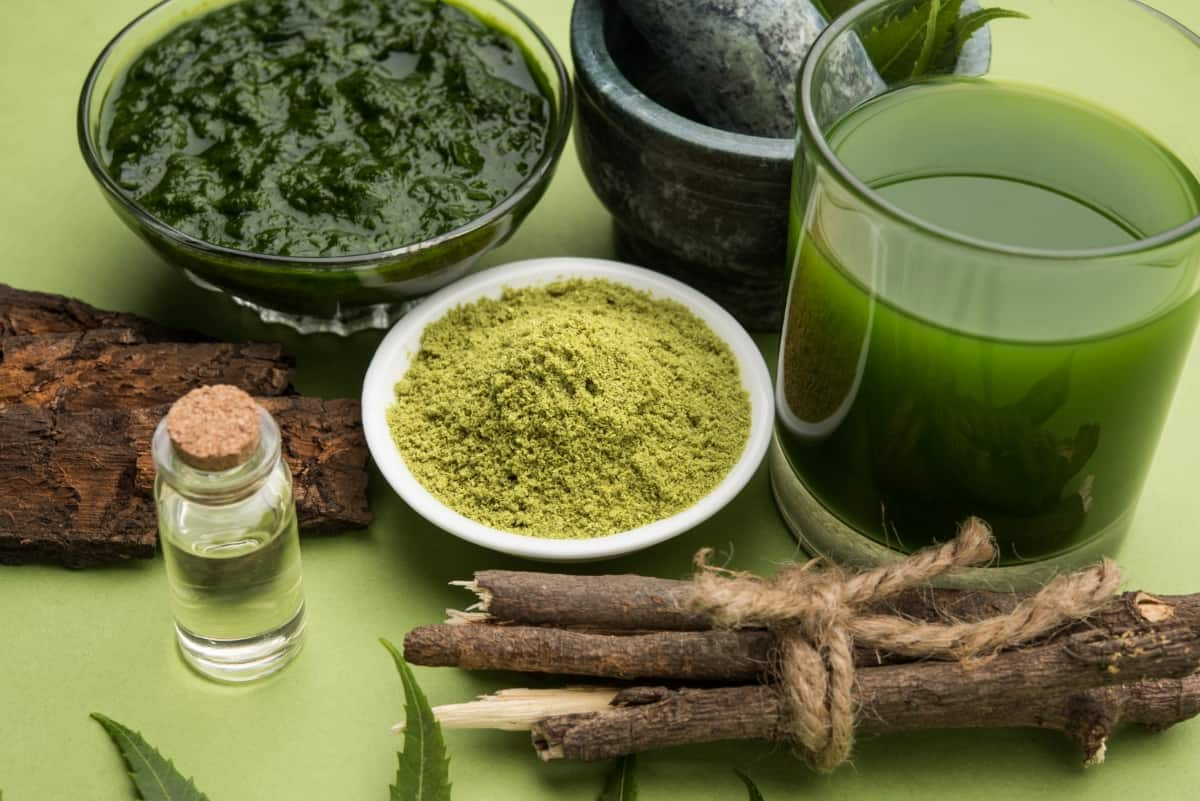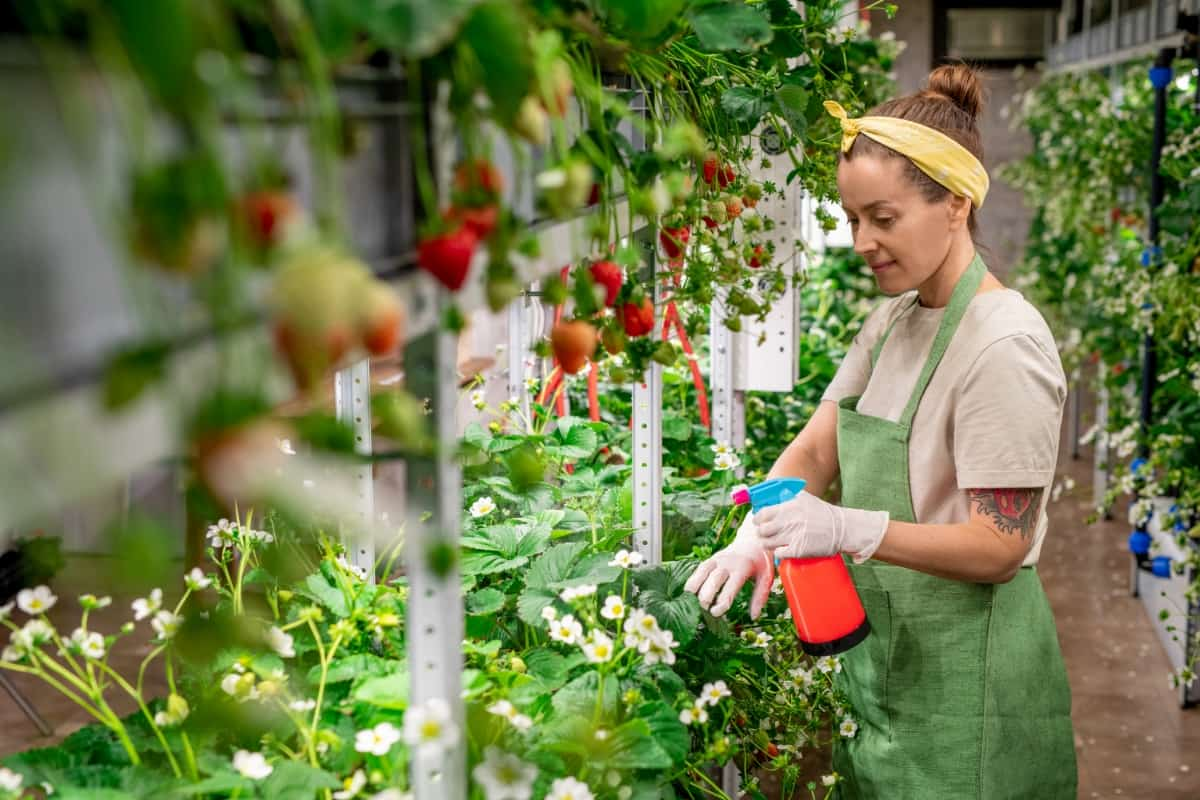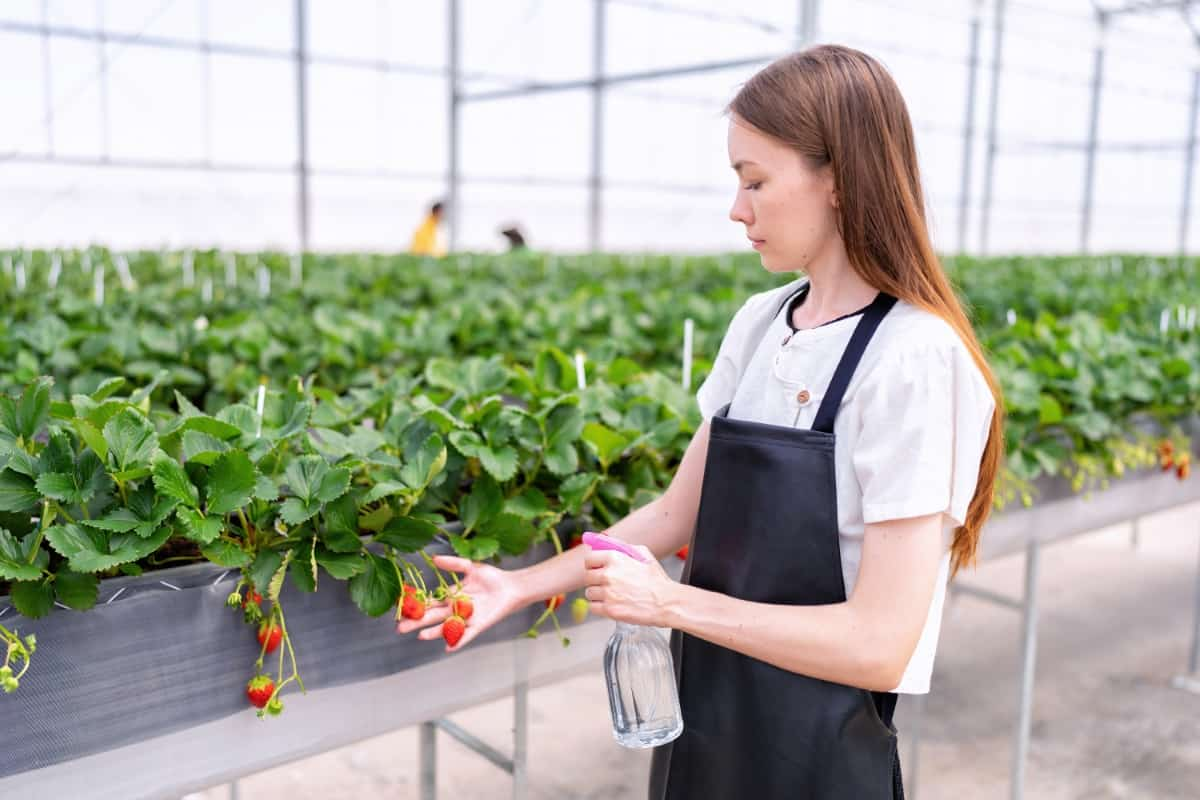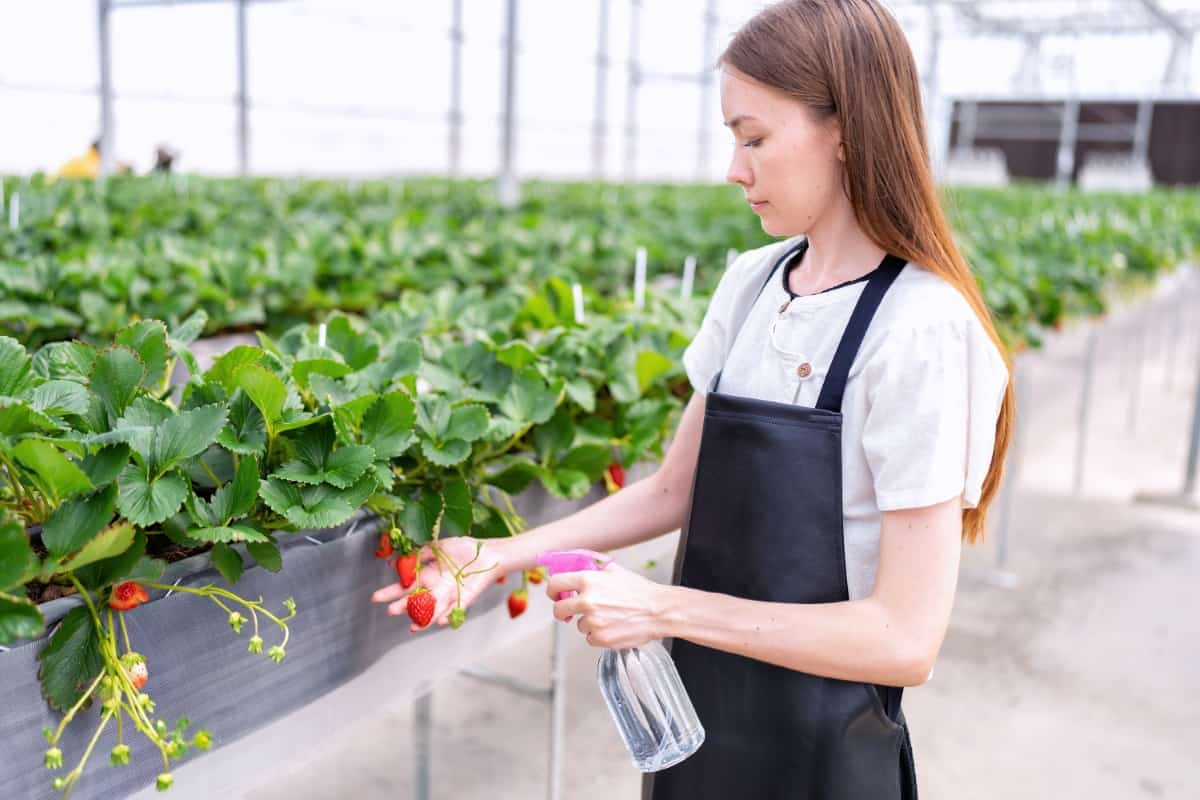Strawberries are not only delicious but also a joy to cultivate. However, these vibrant plants are susceptible to various pests and diseases that can negatively affect their growth and fruit production. One effective and natural solution to combat these issues is neem oil, derived from the neem tree (Azadirachta indica). Neem oil is renowned for its pesticidal properties, making it an excellent choice for organic gardening. This step-by-step guide will briefly explore using neem oil on strawberry plants to promote health and vitality.

How to Use Neem Oil on Strawberry Plants
Understanding Neem Oil Benefits and Uses for Strawberry Plants
Neem oil, made from the neem tree seeds, is a natural and effective remedy for enhancing the health of strawberry plants. Its potent antifungal properties combat common diseases like powdery mildew, ensuring robust plant growth. Neem oil is a deterrent against pests, such as aphids and mites, protecting strawberries without harming beneficial insects.
Furthermore, its ability to boost soil fertility promotes nutrient absorption, contributing to vibrant fruit development. By fostering a healthier environment, neem oil becomes a valuable, eco-friendly strawberry cultivation tool, supporting plant vitality and fruit quality.
The Importance of Neem Oil in Organic Gardening
Neem oil is pivotal in organic gardening due to its multifaceted benefits. Renowned for its natural pesticide properties, it wards off harmful insects without compromising beneficial ones. Its antifungal attributes combat diseases, promoting plant health. Neem oil also serves as an organic soil conditioner, enhancing nutrient absorption and microbial activity.
Unlike synthetic alternatives, neem oil is biodegradable and minimizes environmental harm. Organic gardening embodies sustainability by maintaining ecological balance, fostering healthier crops, and reducing reliance on chemical interventions. Neem oil is a cornerstone in cultivating robust, chemical-free, and environmentally friendly gardens.
Common Pests and Diseases Affecting Strawberry Plants
Strawberry plants are susceptible to various pests and diseases impacting yield and quality. Common pests include aphids, mites, and strawberry weevils, which feed on leaves and compromise plant vigor. Spider mites cause stippling damage, affecting fruit development. Diseases like powdery mildew and gray mold (Botrytis cinerea) thrive in damp conditions, hindering growth and causing fruit decay.
In case you missed it: Using Neem Oil on Cucumber Plants: A Natural Way to Control Cucumber Pests

Fusarium wilt and Verticillium wilt are soil-borne diseases leading to wilting and reduced plant vitality. Regular inspection, proper spacing, and ensuring well-drained soil are crucial to mitigate these issues. Organic remedies like neem oil combat pests and fungi, contributing to healthier strawberry crops in home gardens and commercial fields.
Why Neem Oil is an Effective Solution for Strawberry Plant Care
Neem oil is an effective solution for strawberry plant care due to its versatile properties. As a natural pesticide, it repels and disrupts the life cycle of pests like aphids and mites, safeguarding strawberry plants from infestations. Its antifungal attributes combat diseases such as powdery mildew, preventing fungal growth on leaves and fruits.
Neem oil also serves as a growth promoter by enhancing nutrient absorption in the soil, contributing to robust plant development. Importantly, it is environmentally friendly, posing minimal risk to beneficial insects and maintaining ecological balance in the garden. In strawberry cultivation, neem oil emerges as a holistic, sustainable, and organic tool for pest control and overall plant health.
Preparing Neem Oil for Application on Strawberry Plants
Step 1: Identifying Pest or Disease Issues on Strawberry Plants
Regular inspection is crucial for identifying pest or disease issues on strawberry plants. Look for signs such as distorted leaves, discoloration, wilting, or pests like aphids, mites, or weevils. Examine both upper and lower leaf surfaces and the stems and fruits. Common diseases like powdery mildew manifest as a white powdery substance on the leaves, while gray mold (Botrytis cinerea) causes fuzzy, grayish-brown patches on berries. Early detection enables timely intervention and prevents further damage.
In case you missed it: How to Use Neem Oil in Greenhouse Gardening: Organic Pest Control Method for Greenhouse Crops

Step 2: Mixing Neem Oil Solution for Strawberry Plant Treatment
Start with a high-quality, cold-pressed neem oil for an effective neem solution. Mix neem oil (1 to 2 teaspoons) in 4 liters of water with a mild liquid or insecticidal soap. The soap aids in emulsifying the oil, enhancing its distribution and efficacy. Thoroughly stir the mixture to achieve a homogenous solution.
Transfer the neem oil solution to a spray bottle, ensuring proper ventilation during the preparation. This solution should be sprayed on the affected strawberry plants, covering upper and lower leaf surfaces, stems, and fruits. Application is best done early or late evening to avoid direct sunlight.
Step 3: Applying Neem Oil to Strawberry Plants
With the neem oil solution prepared, applying it to strawberry plants is a crucial step in pest and disease management. Begin by selecting a calm day with no rain forecast to ensure the solution adheres to the plants effectively. Shake the spray bottle containing the neem oil solution to remix any separated components.
Aim to coat leaves’ upper and lower surfaces evenly, stems, and fruits. Ensure thorough coverage, but avoid excessive dripping. Neem oil is best applied in the early morning or late evening to avoid leaf burn in direct sunlight. Press the spray nozzle to release a fine mist covering the entire plant. Pay special attention to areas with visible pests or disease symptoms.
Step 4: Repeating the Neem Oil Treatment Process for Optimal Results
Consistency is key for optimal results in neem oil treatment for strawberry plants. Repeat the application every 7-14 days throughout the growing season or until the pest or disease issue is effectively controlled. Regular treatments maintain a protective barrier, preventing reinfestation and promoting plant health.
In case you missed it: Using Neem Oil on Tomato Plants: A Step-By-Step Guide to Natural Way to Control Tomato Pests

Inspect your strawberry plants closely for any signs of pests or diseases, adjusting the frequency if needed. Additionally, consider preventive applications in early spring to ward off potential issues. This ongoing commitment to neem oil application ensures sustained protection, contributing to thriving and productive strawberry plants in your garden or farm.
Conclusion
In conclusion, utilizing neem oil on strawberry plants is a holistic approach to maintaining their health. This step-by-step guide empowers growers to effectively identify, mix, apply, and repeat the neem oil treatment. By combating pests, preventing diseases, and promoting overall plant vigor, neem oil emerges as a sustainable and organic solution. Consistent application ensures optimal results, contributing to thriving and bountiful strawberry harvests in a natural and environmentally friendly manner.
- Feed Your Flock for Less: Top 10 Tips to Save on Chicken Feed
- Ultimate Guide to Ossabaw Island Hog: Breeding, Raising, Diet, and Care
- Hatching Answers: The Top 10 Reasons Your Chickens Aren’t Laying Eggs
- Eggs and Economics: Breaking Down the Cost of Raising Backyard Chickens
- Defend Your Greens: Proven Methods to Keep Iguanas Out of Your Garden
- Ultimate Guide to Cinnamon Queen Chicken: A Comprehensive Guide for Beginners
- Ultimate Guide to California Tan Chicken: Breeding, Raising, Diet, Egg-Production and Care
- Ultimate Guide to Marsh Daisy Chicken: Breeding, Raising, Diet, and Care
- 10 Types of Chicken Farming Businesses You Can Start for Profits